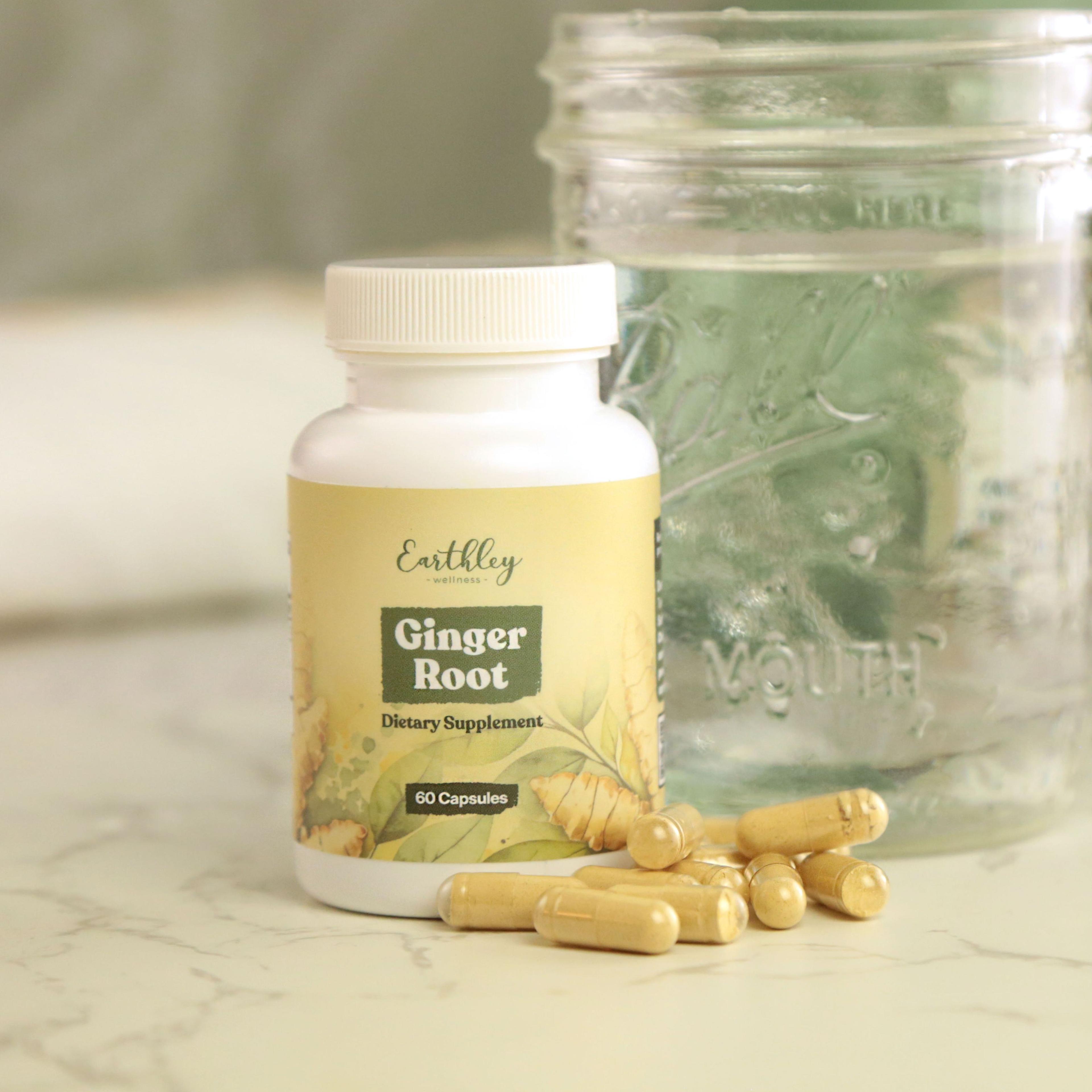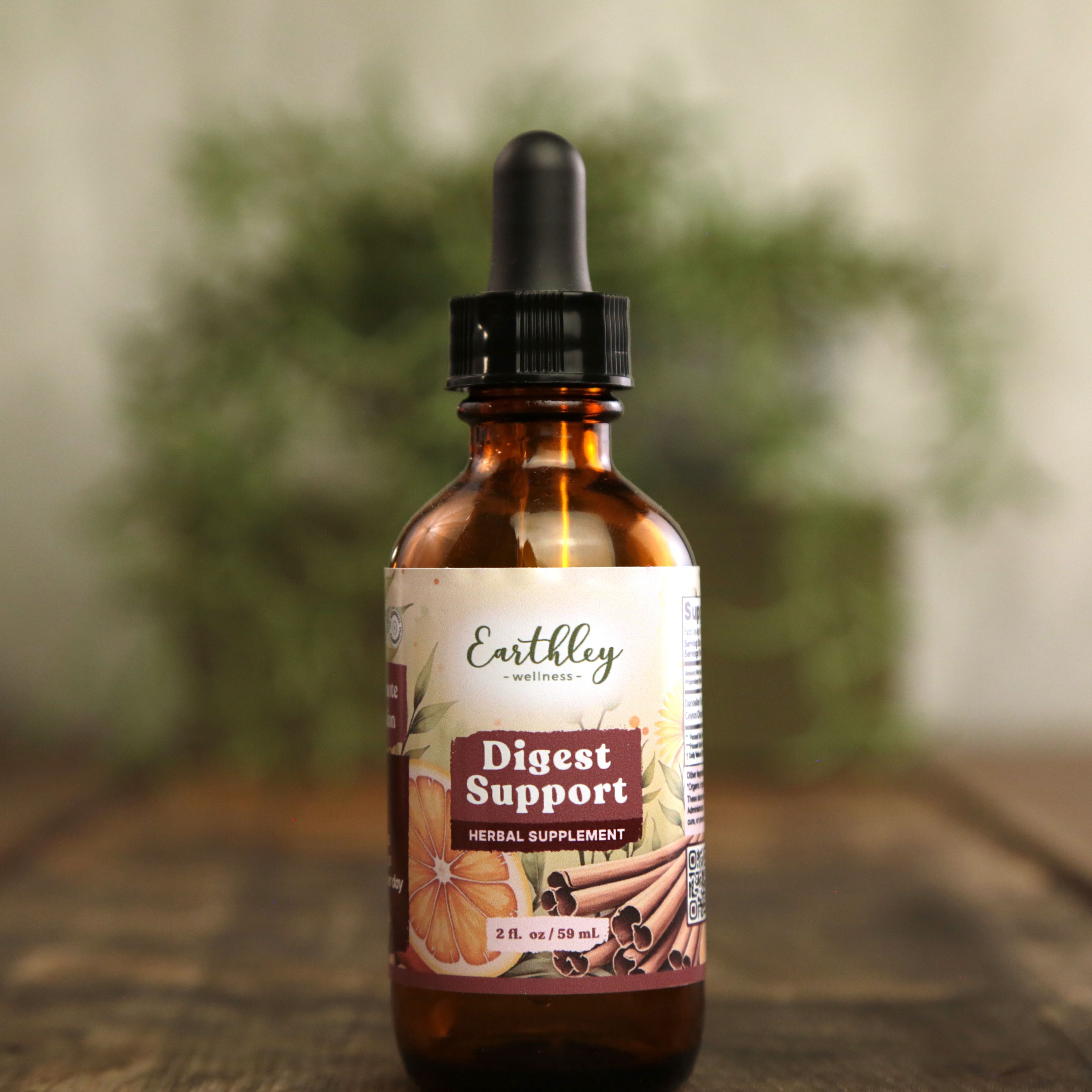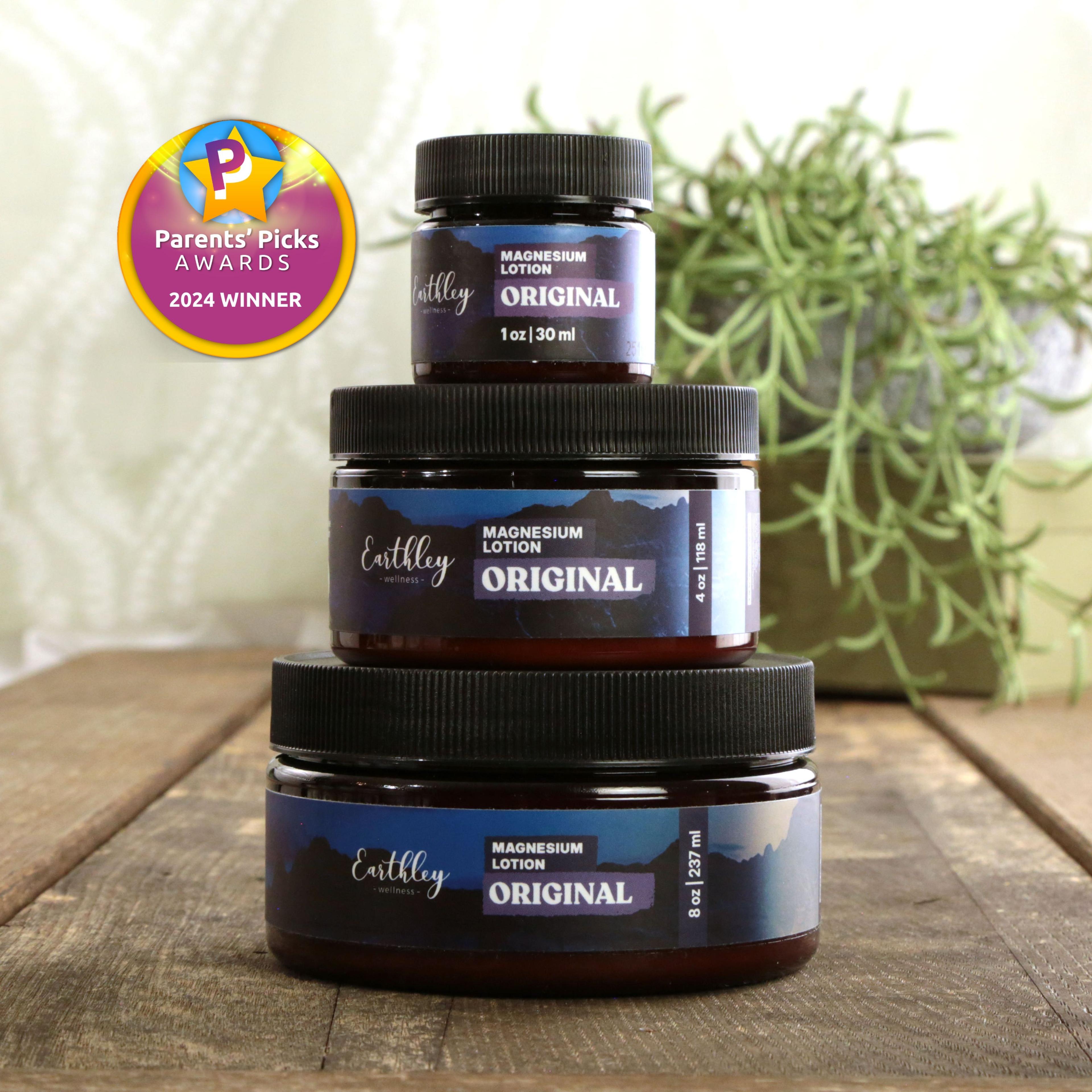How to Improve Your Gut Health After Antibiotics

Gut feeling off after taking an antibiotic? You’re not imagining it.
As much as we try to avoid them, sometimes antibiotics are necessary. Even when necessary, they throw our gut out of balance in a big way. That’s because antibiotics don’t discriminate between the “bad” bacteria causing the problem and the “good” bacteria that help us feel our best.
This blog serves as a guide to help us gently support our guts step by step after taking antibiotics. It is not intended to be used as medical advice.
How Antibiotics Affect Digestion
Antibiotics come in three forms: biological, semi-synthetic, and synthetic. Regardless of the type, they work in one of two ways. They either slow the growth of bacteria without killing it, or they interfere with the bacteria in ways that lead to its death[1]. Since their function is to hinder or kill bacteria, they are not able to distinguish which bacteria are good and which are bad[2]. This ultimately disrupts the balance in the gut even more and can lead to other health concerns.
So, how do we tell when our gut bugs are out of balance? We experience symptoms like[3]:
- Chronic fatigue
- Cramping, gas, and/or bloating
- Acid reflux or heartburn
- Vaginal or rectal infections or itching
- Food intolerances
- Inflammation
- Aching joints
- Skin issues
- Issues with concentration
- Anxiety or depression
But there is good news! We can make simple lifestyle changes to prevent this from leading to serious, chronic conditions.
Small and Simple Steps
Step 1: Eliminate processed and refined sugars
This is one of the hardest, yet most critical, steps in getting your gut back on track.
For many of us, sugar tends to be one of the things we reach for when we are stressed or in need of comfort. We seek that dopamine hit to avoid or delay facing whatever unpleasant thing we need to do next. However, processed sugars are a leading cause of many chronic illnesses.
The reason sugar elimination is step one because it leads us more easily into the rest of the process.
Beneficial sugars include: honey (local and raw is best!), molasses, and those found in whole fruit.
Step 2: Healthy hydration
Remaining hydrated is key to a lot of our body systems, especially our lymph system, which plays a large role in regulating our immune system. If this isn’t in place, then it can make the next couple of steps more unpleasant than they may be otherwise.
The best rule of thumb when it comes to adequate hydration is 1 ounce of water for every 2 pounds of body weight. For example, if you weigh 130 pounds/59 kilograms, then you should drink 65 ounces/1.9 liters of water.
Coffee, Juices, Alcohol, or other beverages high in caffeine and sugar do not count as part of your daily water intake. Caffeine acts like a diuretic, meaning it causes you to lose water.
Step 3: Incorporate prebiotic foods
Now that we are drinking enough water, we are ready to bring in the prebiotics. Prebiotics are not the same as probiotics. Just as we need probiotics to help us thrive, our gut bacteria need something to thrive off of as well. Prebiotics are the non-digestible parts of our fruits and vegetables (a.k.a Fiber).
Just like we can’t expect plants to flourish in barren soil, we can’t expect our probiotic supplements to support us when their environment is not habitable[4]. Do not try to jump right into a raw food diet, as this can make gut symptoms worse.
Fiber is essential, but introducing it too quickly can worsen symptoms like gas, bloating, and cramping. Websites like MyFoodData can help us get an idea of how much fiber we are getting in a day, so adjustments can be made at a reasonable pace.
If gas and bloating are something we’re already experiencing, incorporating fruit like papaya and pineapple may be helpful. They contain Papain and Bromelain, which help improve digestion. In some cases, it may mean we need to cut back on the amount of soluble fiber that we are ingesting, since gas and bloating are signs that the fiber is fermenting in your gut.
Step 4: Incorporate more fiber and probiotic foods
Continuing with fiber, a sufficient amount of fiber is necessary to trigger our large intestine to move waste out. A leading cause of constipation is not enough bulk in our stools. When we have sufficient weight and water, our large intestines move more easily and frequently.
As for probiotic foods, these are foods that have already been fermented, like sauerkraut, kefir, kombucha, and others. These foods provide other microbes and more bioavailable nutrients that aid the digestive processes in our gut.
The only caution here is if there is a high level of inflammation in the gut. Fiber and the brine used to ferment the foods can exacerbate the inflammation. So, take it slow to find out what amount is right for you. Everyone is different, so it’s best to learn what that amount looks like from the one who knows you best-you.
Step 5: Use supplements throughout as needed
As you kick off this journey of improving your gut health, you may find supplementation helpful. Let’s be honest, healing our guts isn’t always smooth or linear, but having the right tools can make it much more manageable. Several herbs support the transitions to make them more tolerable.
Bone broth, ginger, peppermint, and turmeric with black pepper can help our digestive system feel calm and supported while reducing inflammation.
Digest Support, Gut Health Oil, and Digest Ease may provide gentle digestive support, helping our bodies feel more settled and nourished as we recover.
Liver Love and Castor Detox (Warm/Cold) support our liver and overall detox pathways, helping us feel lighter and more balanced as we work on restoring our gut health.
Taking a probiotic may help encourage the re-establishment of healthy colonies and may be the most beneficial at this stage in the process.
Step 6: Sleep Tracking
For those who are already doing this, keep it up! For those that aren’t, no worries. While smart watches and Oura rings can make this process easy, there are apps that can be downloaded on our smartphones to track this as well.
How we sleep plays a big part in how our body detoxes and resets. When this process is disrupted, it makes it harder for our organ systems to run efficiently. One tool that is supportive is the Organ Clock[5]. This is a Chinese medicine modality. When we wake up at specific times during the night, it could be an indication that the organ that time represents needs support, or the organ directly opposite may need support.
An example would be waking up between 1am and 3am. This is Liver time. So, the liver may need some support, or the small intestine (its direct opposite) may need support. (See liver support suggestion above)
If sleep disruptions are being caused by something else, you may find our Magnesium Lotion or Sleepy Time to be helpful.
Step 7: Exercise regularly
Whether it’s Zumba, a walk around the block, yoga, or a gym session, the biggest key here is just to move. If it helps to have a starting point, set a timer to go off every couple of hours each time you sit down. When it goes off, get up and take a turn around the room.
Every little bit helps until you can find a form of exercise that you can commit to, because, let’s face it, not everyone loves to exercise. Our movements and deeper breaths not only help massage the organs that need the stimulation to work at their best, but it also ensures our lymph system moves so your immune systems stay strong and toxins aren’t left to linger.
Step 8: Establish a nervous system regulation protocol
Nervous system regulation hasn’t been talked about much in mainstream conversations. It’s important to find a protocol that works for you and implement it in your routine because it can kick you out of fight or flight mode so you don’t experience burnout.
In a busy world, it’s hard to find moments to slow down, be still, or do a little more to make sure our nervous systems get a break. This doesn’t need to be something time-consuming or complicated.
This could be as easy as taking five minutes to do some intentional breathwork (breathe in for 4 seconds, hold for 7, exhale 8), a guided meditation, a short yoga session, a power nap (10-15 min) under a weighted blanket, or humming a favorite song.
Signs of Improvement
Now that you’ve done and are still doing all the steps, how do you know that all this work and time have made a difference? It may take some reflection to become aware of some of these. Others may have become obvious along the way. But some indications that our gut is doing better may include[6]:
- Improved digestion and bowel movements
- Less gas and bloating
- Improved energy
- Better mood
- Clearer skin
- Reduced food sensitivities
Healing your gut doesn’t have to be overwhelming or all-or-nothing. Even small changes, like drinking more water or taking five minutes to breathe, can lead to big shifts over time.
While you might not feel the difference overnight, trust that your body is working with you. Let’s stay consistent, stay curious, and give yourselves grace along the way.
And the next time antibiotics are necessary? You know exactly how to support your body through recovery with confidence, calm, and care.
Disclaimer - This blog post is provided for educational and informational purposes only and does not constitute providing medical advice or professional services and its statements have not been evaluated by the FDA. The information provided should not be used for diagnosing or treating a health problem or disease. Always seek the advice of a qualified health care provider regarding a specific medical condition.
Check out these products!

Relieves occasional nausea and promotes normal inflammatory response


To promote gut health

Bitters to promote healthy digestion

Supports digestive health and helps maintain a balanced microbial environment. Supports oral hygiene.

To support healthy liver function

For lymphatic support

For healthy sleep and magnesium
References:
1) Dutta, D. (2022, January 10). Antibiotics and their impact on bacterial cellular perturbation. Encyclopedia. https://encyclopedia.pub/entry/17979
2) Bruer, M. (2021, October 13). Tackling the collateral damage from antibiotics. EMBL. https://www.embl.org/news/science/antibiotics-effects-microbiome/
3) WebMD Editorial Contributors. (2024, November 13). What is dysbiosis? WebMD. https://www.webmd.com/digestive-disorders/what-is-dysbiosis
4) Kennedy, M. S., Freiburger, A., Cooper, M., Beilsmith, K., St George, M. L., Kalski, M., Cham, C., Guzzetta, A., Ng, S. C., Chan, F. K., Rubin, D., Henry, C. S., Bergelson, J., & Chang, E. B. (2024). Diet outperforms microbial transplant to drive microbiome recovery post-antibiotics. bioRxiv. https://www.biorxiv.org/content/10.1101/2024.08.01.606245v1.full
5) Cherney, K. (2023, June 1). Chinese body clock: Organs and what times they function. Healthline. https://www.healthline.com/health/chinese-body-clock
6) Evergreen Doctors. (n.d.). How to tell that your gut is healing. https://www.evergreendoctors.com/blog/how-to-tell-that-your-gut-is-healing Additional Sources: Additional Sources:
- Windsor Digestive Health. (n.d.). A basic guide to restore gut health. https://windsordigestivehealth.com/a-basic-guide-to-restore-gut-health/
- Mayo Clinic (Community Health). (n.d.). Healthy gut microbiome. https://communityhealth.mayoclinic.org/featured-stories/healthy-gut-microbiome
- Drugs.com. (n.d.). Antibiotic sideeffects, allergies, reactions. https://www.drugs.com/article/antibiotic-sideeffects-allergies-reactions.html
- Tsai, C. S., Hung, Y. P., Lee, J. C., et al. (2023, October 27). Look what the cat dragged in! Recurrent Clostridioides difficile from a household cat [Case report]. Journal, volume(issue). https://pmc.ncbi.nlm.nih.gov/articles/PMC10616900/
- Huang, X., Zhang, Y., Huang, J., Gao, W., Yongfang, X., Zeng, C., & Gao, C. (2023). The effect of FMT and vitamin C on immunity-related genes in antibiotic-induced dysbiosis in mice. PeerJ, 11, e15356. https://doi.org/10.7717/peerj.15356
- https://www.instagram.com/p/CXl0CN3Jfyl/